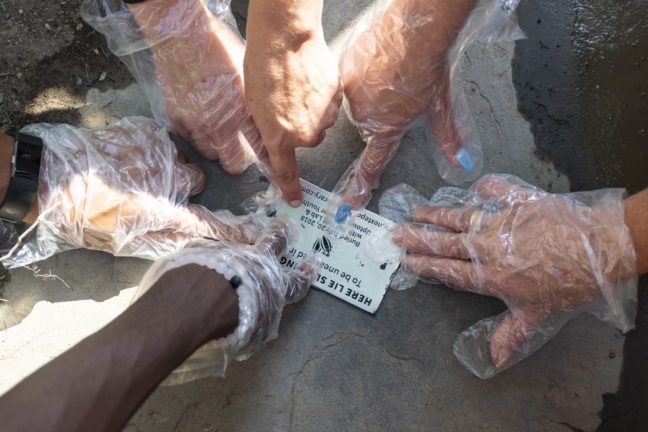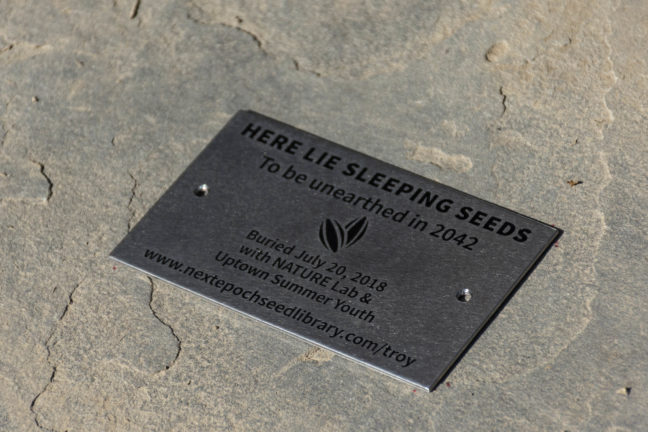Above: Video by Catie Rafferty and Chris Johnstone, Sanctuary TV
In partnership with NATURE Lab at the Sanctuary for Independent Media, NESL ran a seed time capsule workshop for the Sanctuary’s Uptown Summer 2018 Youth Program. The workshop was a new iteration of two earlier burial projects, Time Capsule for Pacific Street Futures and Here Lie Sleeping Seeds.
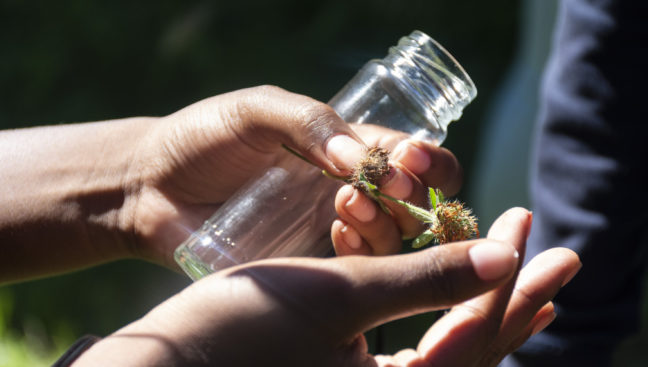
After a discussion about seed longevity and resilience, we collected seeds from wild urban plants growing on the Sanctuary’s Environmental Campus. We focused our attention on the site surrounding an abandoned building that will soon become a new environmental education center for North Troy. We mixed those seeds with seeds from NESL’s collection that are known to have longterm viability (meaning they can stay alive, in a kind of “hibernation” mode, for long periods of time, then sprout when conditions are right). These included species like spotted spurge, Virginia pepperweed, evening primrose, and curly dock.
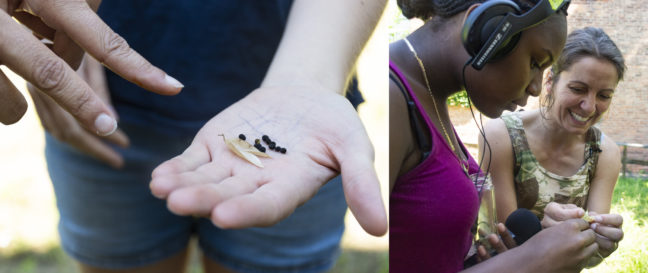
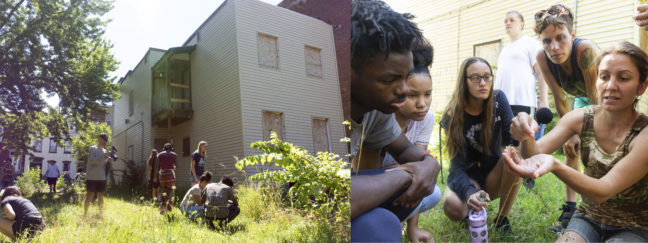
We held a conversation with the youth and program mentors and interns about how North Troy might change over the coming years, as climate change intensifies. What might we expect in ten years? In 20? In 120? Participants wrote down hopes, fears and messages for the future of North Troy on slips of paper, and packed them into vials filled with a mixture of soil and seeds. We also filled a pair of pyramid-shaped ceramic vessels with a communal seed mixture, and sealed them with wax.

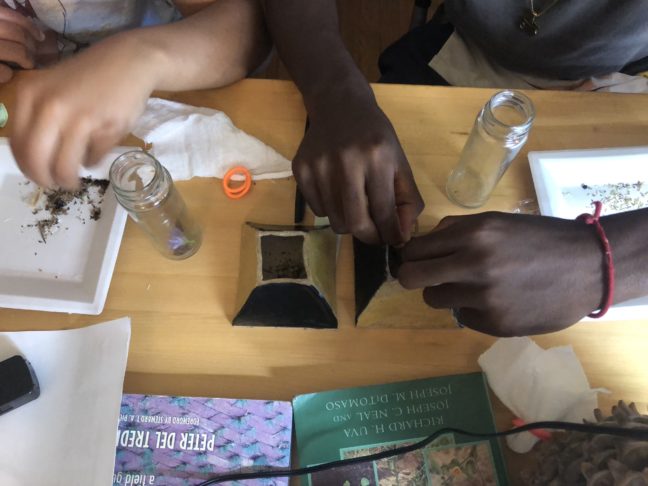
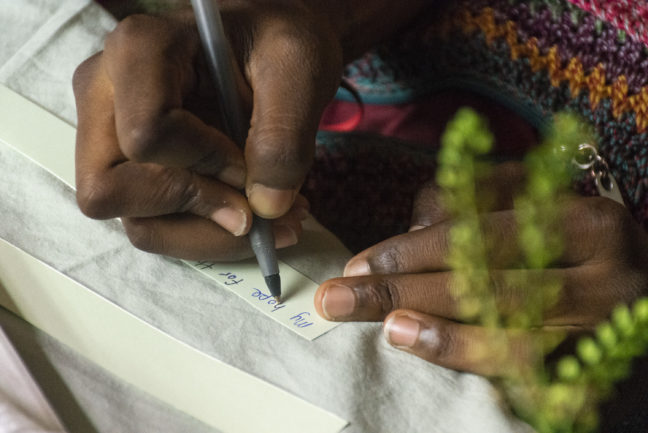

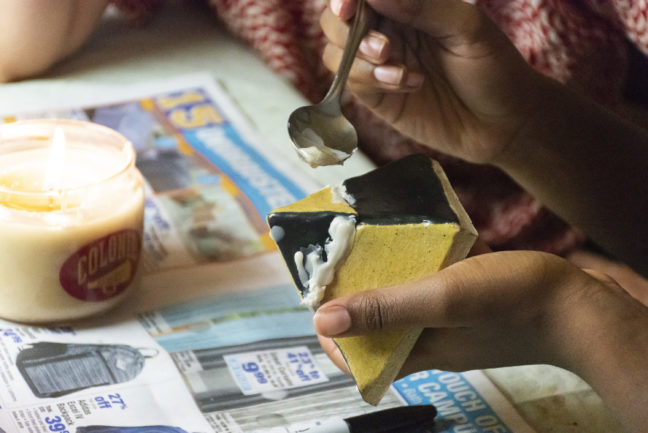
After our conversation and seed packing activity, we focused on burying our seedy time capsule. We reflected on how seeds and plants engage the soil, then worked together to dig a hole in the side yard of the soon-to-be environmental education center, looking for roots and artifacts as we dug. The determined team managed to dig down more than three feet into the rocky, rubble filled soil. We placed one of the ceramic vessels and seven glass vials in the bottom of the hole, and covered them with soil. We also mixed in a “mycobacterium vacce soil cannonball” made by artist Moira Williams and provided to us by Sanctuary intern Julia Cavicchi.
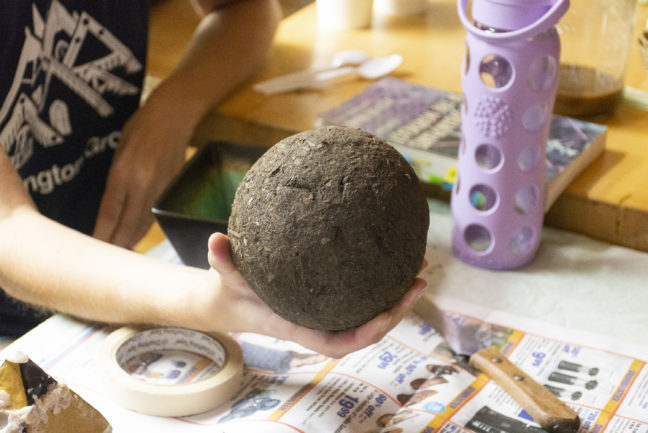
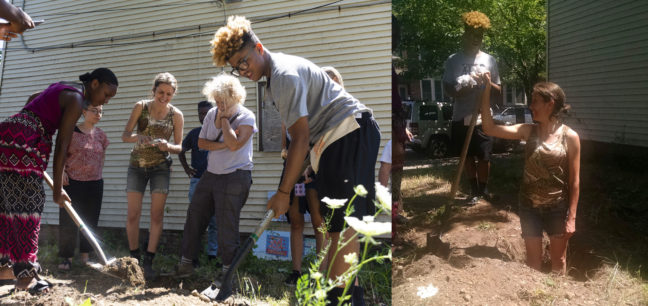
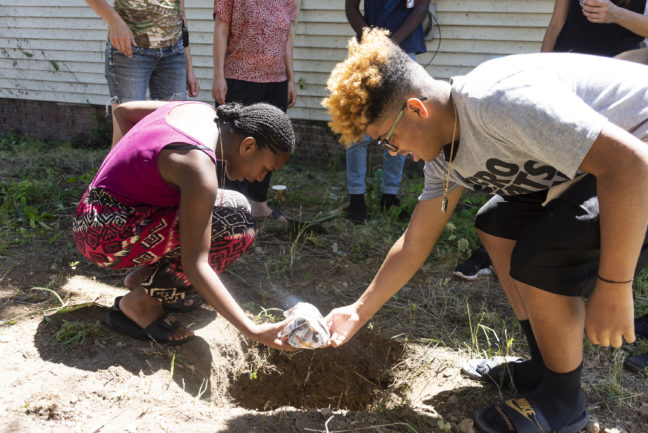
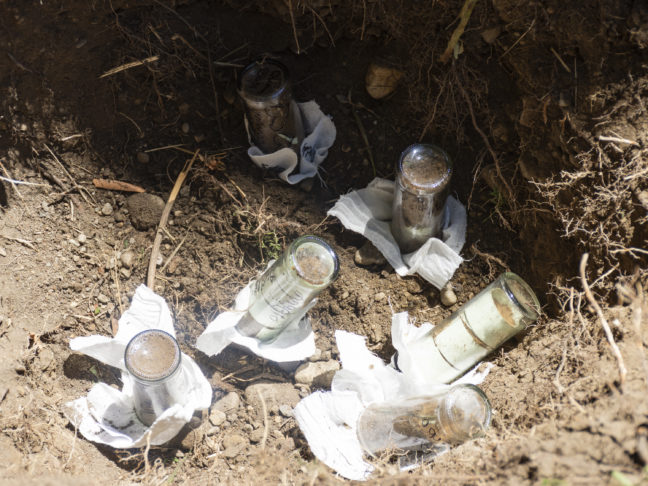
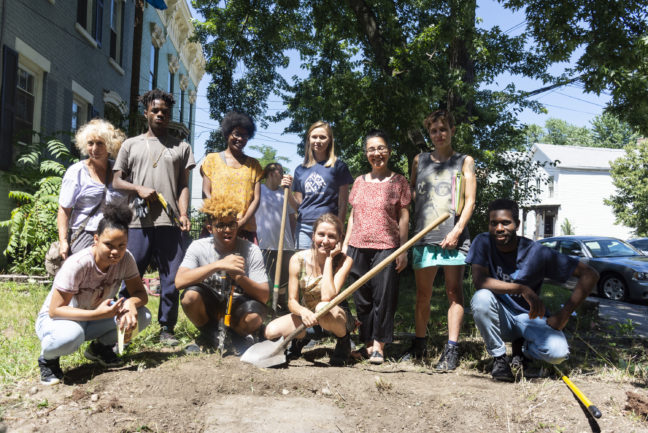
In a final team effort, we moved a huge slab of slate onto the raw soil where we’d buried the seeds. Later we added a plaque announcing our intention to return and unbury the seeds in 2042, the year climate change will be fully upon us here in the North Eastern United States (thanks Andres Chang for the link).

